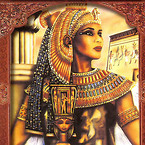
The Old Kingdom Of M
Pharaohs - As per the Palette of Namur, an antiquated cut stone tablet, Upper and Lower Egypt were first bound together around 3100 BCE when the pioneer of Upper Egypt, Menes, vanquished his foes and conveyed a brought together government to the numerous little groups along the Nile. Menes established the first of eight traditions that would control antiquated Egypt for around a thousand years, a period that is known as the Old Kingdom.

Pharaohs
The primary confirmation for their being a concentrated government amid this time of Egypt's history is the presence of pyramids in the district. To manufacture these expansive structures would have taken a gigantic measure of labor, perhaps into the many thousands. The arrangement of nourishment, water and different basics like lodging for such a workforce would require an enormous measure of arranging so it demonstrates the pioneers of the Old Kingdom had the assets and energy to control huge quantities of individuals.
The First Intermediate Period Of Pharaohs Kingdom
Around 2100 BCE, the Old Kingdom went into decrease and for two hundred years, Egypt was without brought together control. Why the First Intermediate Period occurred is obscure, however it is hypothesized that a catastrophic event made it imposable for the assessments of the workers to be conveyed to the Pharaohs.
Another hypothesis is that duties would have been so high with a specific end goal to pay for stupendous tasks, for example, the pyramids, it could have brought on revolt among the respectable classes which prompted a conclusion to focal expert and a conclusion to the main awesome antiquated Egyptian kingdom.
The Middle Kingdom Of Pharaohs
Taking after the First Intermediate Period in antiquated Egypt was the Middle Kingdom, which endured between 2000 - 1700 BCE. The Egyptian government was brought together by another tradition of Pharaohs with their capital arranged in Thebes. The kingdom extended as far south as Ethiopia and wound up plainly rich from assets mined and quarried.

Pharaohs
As opposed to raising pyramids as their antecedents did, for the Pharaohs of the Middle Period of antiquated Egypt, divine beings were significantly more critical and an extensive number of sanctuaries were assembled. This recommends a more "majority rule" way to deal with love in which every social class were permitted to partake.
Open works were developed, for example, a water system extend in the Fayum Depression west of the Nile close Cairo and a dam was inherent request to control the waters of Lake Moeris. Extraordinary landmarks were additionally raised, a standout amongst the most well known being the Obelisk at Mataria.
The Second Intermediate Period Of Pharaohs
The Second Intermediate Period of Egypt's history again observed a conclusion to brought together Egyptian government and kept going from 1786 - 1560 BCE. It was achieved at first by revolting nobles however another component was the presence of a race of intruders of obscure causes called the Hyksos. The old Egyptians alluded to them as 'the ocean individuals', recommending they originated from the north and as per essential chronicled sources, they utilized steeds and chariots to go through the pastry and bronze weapons that were already obscure to the Egyptian individuals.
A few students of history trust the Pharaohs who named the scriptural Joseph as his vizier was of the Hyksos race and despite the fact that their control was generally fleeting (1700 - 1555 BCE), landmarks and scarabs from that time are as yet present on the Egyptian scene. In the end, opposing the Hyksos turned out to be such a need, to the point that it prompt the third time of an incorporated Egyptian government, that wound up noticeably known as the New Kingdom.
The New Kingdom Of Pharaohs
The New Kingdom kept going between 1560 - 1087 BCE and was begun by a Pharaohs named Ahmose, who at long last crushed the Hyksos intruders. It was a time of development in old Egypt and the domain incorporated all terrains between the Nile and the Euphrates and extended the whole length of the Valley of the Nile.

Life in ancient Egypt
With development came incredible success for the antiquated Egyptians and awesome building tasks were embraced, for example, those at Thebes, the religious focus and once in a while state house of the period. Another declaration to the abundance of the time is the extravagant tombs of rulers and private people, the most well known of which is that of Tutankhamen, whose preserved remains were covered with broad arrangements and fortunes.
The last solid Pharaohs in Egypt was Ramses III of the nineteenth tradition (1182 - 1151 BCE) whose successors needed to manage a degenerate organization and a progression of outside intruders. By 1100 BCE, the govern of the Pharaohs was at an end for ever and Assyrians, Persians, Greeks, Romans, Arabs, French and British trespassers all progressively held Egypt under remote control until 1952 CE.
Follow us on Facebook
You may also like this
Ancient Egyptian Gods and Goddesses
Click to Post

